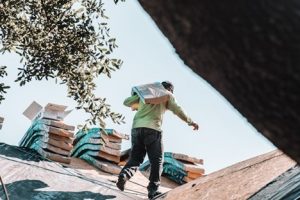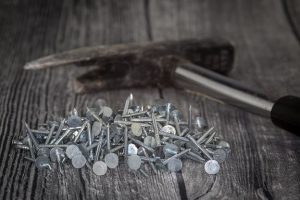Protecting commercial roofing against damage is vital for businesses to ensure daily operations run smoothly. Considering constant threats that compromise structural integrity, this costly investment requires property owners to become familiar with common causes of damage to adequately prepare the roof.
By enlisting the services of a credentialed San Diego commercial roofing company for inspections, business owners can be proactive with roof care. Contractors’ Inspections should be done following major events such as weather and routinely each year.
Contractors can detect defects early and make necessary corrections to prevent them from becoming major problems.
When adequate protection, care, and maintenance are neglected, the structure will experience early signs of aging, premature deterioration, water infiltration, and reduced efficiency.
In your role as the building owner or in property management, you can effectively address common risks and extend the roof’s lifespan by practicing industry recommendations for prevention. Go here for tips for maintaining and repairing a commercial roof.
Common Risks Leading to Commercial Roof Damage

When performing any aspect of property maintenance, the objective is always to take a preventive approach, which applies to the care and upkeep of a commercial roof. Regular inspections are encouraged annually and after a significant weather or other event.
When partnering with a quality roofing company in San Diego, building owners will have a greater opportunity for improved roof performance, reliability, efficiency, and an extended lifespan. Here are some common reasons why commercial roofing becomes damaged.
Lack of routine care and upkeep
A primary factor that contributes to severely damaged roofing is skipping routine maintenance. Property managers and building owners can safeguard the health and extend the lifespan of their commercial roofs by scheduling regular service with a professional roofer.
Inspections allow roofers to detect degrading materials, flashing damage, and early signs of leaks before these issues lead to severe consequences. Structure failure can be avoided when the building has adequate care, including gutter cleaning, debris removal, and staying up to date with minor repairs.
When roofing maintenance is neglected, standard risks can compromise structural integrity. Repercussions that arise from ignoring regular upkeep include moisture intrusion and leaks. These can escalate into mold growth and structural damage.
The roof can rapidly begin to deteriorate with improper water drainage that creates ponding water. Improper water drainage results from repairs that go unaddressed, blocked vents, and clogged drains. Visit https://www.insurancejournal.com/blogs/iat/2023/09/01/738326.htm for a guide on best practices for roof inspections.
Age/degradation
A commercial roof’s durability and performance are impacted by its age. As age progresses, the structure grows more susceptible to wear and tear from constant abuses like exposure to harsh weather.
Becoming familiar with how age impacts performance is vital to ensure prompt interventions and adequate maintenance. Building owners can depend on red flags to reveal deterioration and degradation such as missing or cracked shingles, granule loss, discoloration or fading.
Additionally, businesses will notice interior wall or ceiling staining and an increase in utility costs. At the first sign of degradation or deterioration, proactive measures to address the concerns could lead to a longer lifespan.
Severe weather
Recognizing weather conditions that may present a risk to a commercial roof is vital to taking adequate preventive measures. Events such as hail, high winds, heavy storms, and accumulations of snow have the potential for severe roof damage.
High winds lead to dislodged or loosened shingles, uplifted materials, or compromised integrity. Hail can puncture or dent the material, creating leaks or structural problems. Drainage systems can be overwhelmed by heavy storms, leading to water infiltration or ponding.
The roof can be excessively weighed down with significant snow accumulations, potentially leading to collapse.
Mitigating severe weather effects involves making prompt repairs or replacements, reinforcing vulnerable areas, and performing necessary inspections. The damaging effects of severe weather can be extensive and expensive unless you’re prepared and follow proactive steps to safeguard your roof.
Poor workmanship

You can experience repercussions in performance and a shortened lifespan if a commercial roof is improperly installed. You may have inadequate waterproofing, lack structural integrity, and poor sealing in vital areas.
A reliable, durable roof must adhere to manufacturer guidelines, follow proper installation techniques, and incorporate quality materials.
When workmanship falls below quality, it can manifest in a number of ways and directly affect integrity. Some signs include inconsistent seams, misaligned materials, inadequate ventilation, and improper flashing installation.
The repercussions will include premature deterioration, leaks, and compromised efficiency. Recognizing and promptly addressing these signs using professional intervention can mitigate additional damage and preserve the structure’s performance.
In order to save a considerable expense, it’s essential when having a roof installed to invest in a credentialed, reputable contractor with a track record for quality workmanship to achieve a durable and functional commercial roof.
This will mean due diligence in research and obtaining quotes from roughly 3-5 companies to find the most suitable contractor for your business. The extra effort will help you avoid the negative repercussions of a poorly installed structure.
Poor draining/ponding water
Standing water accumulating on a flat roof or ponding water has detrimental consequences for the structure’s integrity. The excessive weight stresses the roof, causing it to develop structural damage, begin to sag and develop leaks.
This standing water is also a breeding ground for moisture-related problems such as mold and algae. When the roof drainage system is inadequate, it contributes to ponding. Issues such as gutters, clogged or insufficient drains, and downspouts disallowing adequate flow and drainage lead to accumulated water.
Credentialed roofers check the drainage system to assess the design and installation. The contractor is consistent with inspections and maintenance of the system to prevent standing water and protect the structure from issues associated with poor drainage.
Commer roof health and lifespan depends on drainage system problems like accumulated water being promptly addressed. As a building owner, if you believe these to be a concern, you should reach out to a qualified roofer to check for moisture and make the necessary corrections.
Lack of efficiency and insulation
Commercial buildings realize greater energy efficiency when the commercial roof is well insulated. Indoor temperatures are better controlled since they are regulated with proper insulation. This means the HVAC system doesn’t need to exert as much effort helping to reduce utility expenses.
With the insulations presenting a thermal barrier, heat is unable to transition through the roof, allowing the building interior to remain comfortable. When the insulation is insufficient, it affects the structure’s performance and increases energy costs.
Without enough insulation, the building’s occupants experience excessive heat in the summer months and the heat escapes in the winter. With the HVAC system stressed, utility costs spike.
Insulation insufficiencies can be addressed by consulting with experts, having energy audits, and upgrading the roof insulation. The many benefits of adding insulation to the roof include improvements in the overall performance of your commercial roof.
Accumulation of debris and vegetation
Roofing that accumulates an abundance of debris or vegetation growth will affect performance and condition. The roof’s integrity can be compromised when the surface is infiltrated by vegetation such as algae, moss, and weeds.
Debris such as branches, leaves, and dirt can trap moisture, block drainage, and escalate deterioration. Common issues created by accumulations of debris and vegetation include clogged downspouts and gutters, water ponding, an increase in moisture retention, and roofing material damage.
Routine maintenance and regular cleaning to include trimming overhanging branches and taking a proactive approach to help mitigate issues associated with the accumulation of debris and vegetation can protect the roof’s performance and extend its lifespan.
Foot traffic
Foot traffic should be limited on commercial roofs to avoid dislodging materials, causing mechanical stress, and compromising the waterproofing layers. Aside from the damage you can create, walking on the roof is a serious safety hazard for the average person.
Professional roofers implement property safety measures in order to minimize risks.
When performing maintenance or installing equipment, the structural integrity can be compromised if improperly placed or mishandled. It can lead to punctures, leaks, and weakened support. Click for common but avoidable commercial roofing problems.
As the building owner, it’s vital to institute stringent access protocol, ensure sufficient walkways are in place, and use protective measures such as roof guards or pads to mitigate associated risks when maintenance is performed, equipment is installed, and contractors must access the roof.
Final Thought
When San Diego building owners recognize core issues that lead to commercial roof damage, they can take preventive measures to address these problems and avoid expensive repairs or the need for premature replacement.

